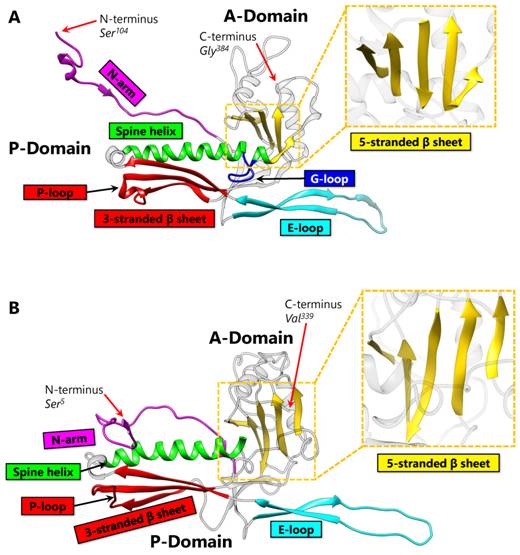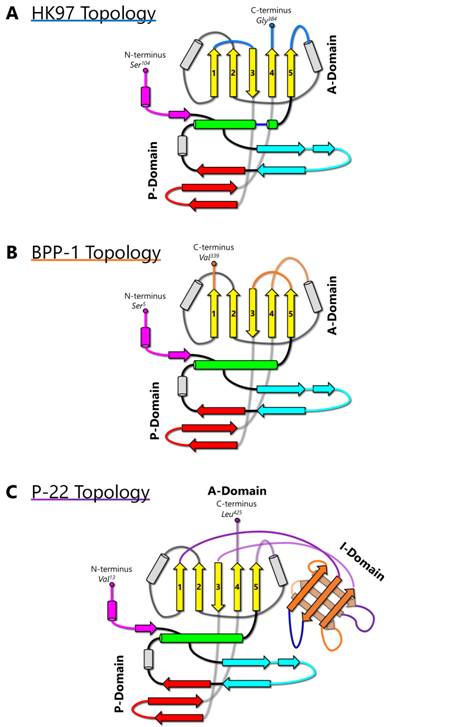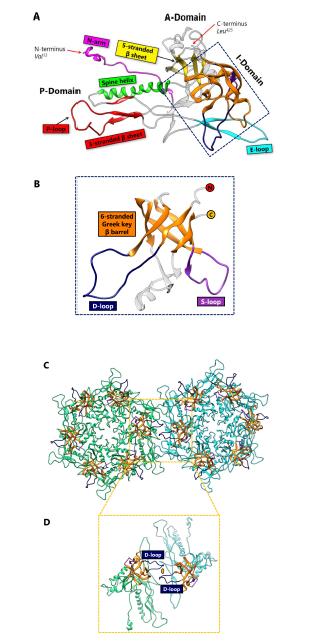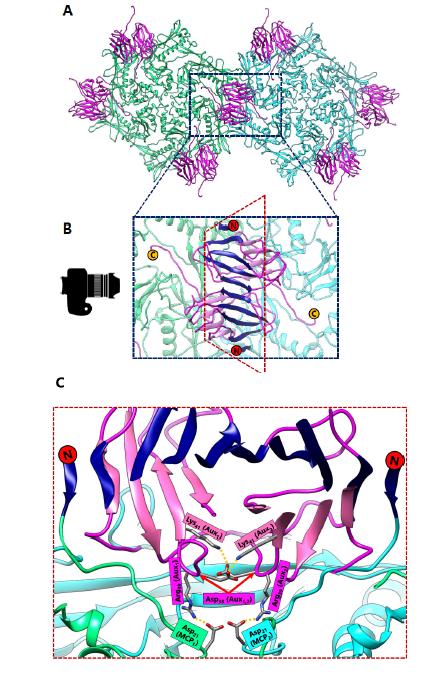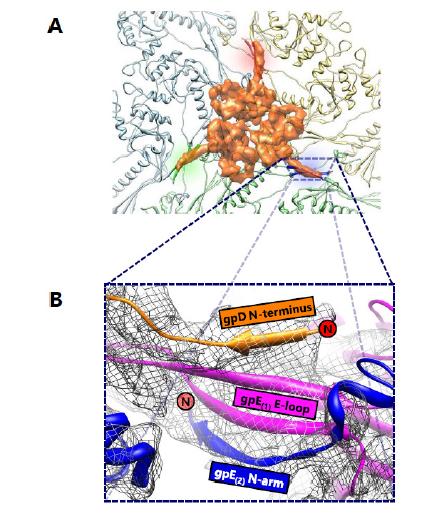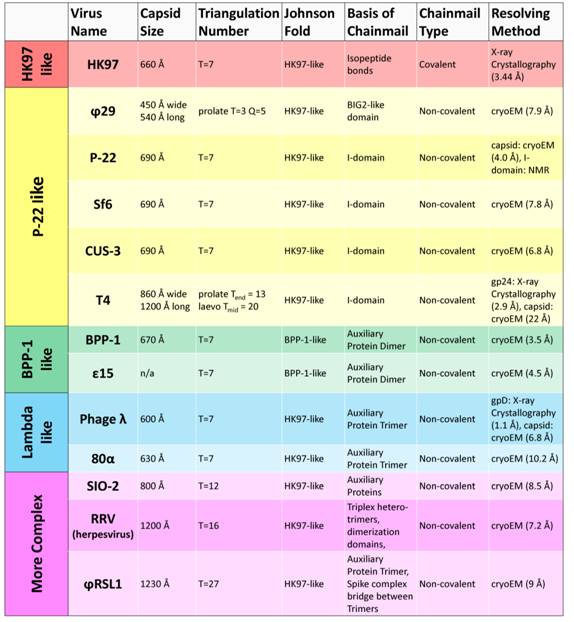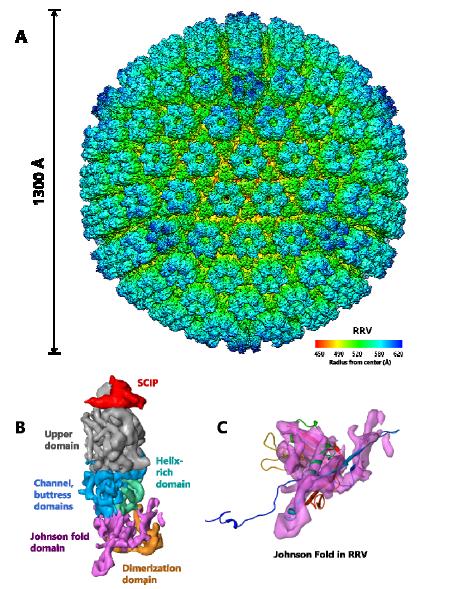|
[1]
|
European Commision (2014) Journalist Workshop on organ donation and transplantation, Recent facts and figures.
|
|
[2]
|
Weiner DE (2009) Public health consequences of chronic kidney disease. Clin Pharmacol Ther 86: 566–569. doi: 10.1038/clpt.2009.137

|
|
[3]
|
Hesuani Y, Pereira FDAS, Parfenov V, et al. (2016) Design and Implementation of Novel Multifunctional 3D Bioprinter. 3D Print Addit Manuf 3: 64. doi: 10.1089/3dp.2015.0040

|
|
[4]
|
Colaco M, Igel DA, Atala A (2018) The potential of 3D printing in urological research and patient care. Nat Rev Urol 15: 213–221. doi: 10.1038/nrurol.2018.6

|
|
[5]
|
Cui X, Breitenkamp K, Lotz M, et al. (2012) Synergistic action of fibroblast growth factor-2 and transforming growth factor-beta1 enhances bioprinted human neocartilage formation. Biotechnol Bioeng 109: 2357–2368. doi: 10.1002/bit.24488

|
|
[6]
|
Murphy SV, Atala A (2014) 3D bioprinting of tissues and organs. Nat Biotechnol 32: 773–785. doi: 10.1038/nbt.2958

|
|
[7]
|
Skardal A, Atala A (2015) Biomaterials for integration with 3-D bioprinting. Ann Biomed Eng 43: 730–746. doi: 10.1007/s10439-014-1207-1

|
|
[8]
|
Bulanova EA, Koudan EV, Degosserie J, et al. (2017) Bioprinting of functional vascularized mouse thyroid gland construct. Biofabrication 9: 034105. doi: 10.1088/1758-5090/aa7fdd

|
|
[9]
|
Rak-Raszewska A, Hauser PV, Vainio S (2015) Organ In Vitro Culture: What Have We Learned about Early Kidney Development? Stem Cells Int 2015: 959807.
|
|
[10]
|
Grobstein C (1953) Inductive epitheliomesenchymal interaction in cultured organ rudiments of the mouse. Sci 118: 52–55. doi: 10.1126/science.118.3054.52

|
|
[11]
|
Grobstein C (1956) Inductive tissue interaction in development. Adv Cancer Res 4: 187–236. doi: 10.1016/S0065-230X(08)60725-3

|
|
[12]
|
Saxen L, Wartiovaara J (1966) Cell contact and cell adhesion during tissue organization. Int J Cancer 1: 271–290. doi: 10.1002/ijc.2910010307

|
|
[13]
|
Herrera M, Mirotsou M (2014) Stem cells: potential and challenges for kidney repair. Am J Physiol Renal Physiol 306: F12–23. doi: 10.1152/ajprenal.00238.2013

|
|
[14]
|
Auerbach R, Grobstein C (1958) Inductive interaction of embryonic tissues after dissociation and reaggregation. Exp Cell Res 15: 384–397. doi: 10.1016/0014-4827(58)90039-9

|
|
[15]
|
Unbekandt M, Davies JA (2010) Dissociation of embryonic kidneys followed by reaggregation allows the formation of renal tissues. Kidney Int 77: 407–416. doi: 10.1038/ki.2009.482

|
|
[16]
|
Junttila S, Saarela U, Halt K, et al. (2015) Functional genetic targeting of embryonic kidney progenitor cells ex vivo. J Am Soc Nephrol 26: 1126–1137. doi: 10.1681/ASN.2013060584

|
|
[17]
|
Lancaster MA, Knoblich JA (2014) Organogenesis in a dish: modeling development and disease using organoid technologies. Sci 345: 1247125. doi: 10.1126/science.1247125

|
|
[18]
|
Schutgens F, Verhaar MC, Rookmaaker MB (2016) Pluripotent stem cell-derived kidney organoids: An in vivo-like in vitro technology. Eur J Pharmacol 790: 12–20. doi: 10.1016/j.ejphar.2016.06.059

|
|
[19]
|
Xinaris C, Benedetti V, Rizzo P, et al. (2012) In vivo maturation of functional renal organoids formed from embryonic cell suspensions. J Am Soc Nephrol 23: 1857–1868. doi: 10.1681/ASN.2012050505

|
|
[20]
|
Xinaris C, Benedetti V, Novelli R, et al. (2015) Functional Human Podocytes Generated in Organoids from Amniotic Fluid Stem Cells. J Am Soc Nephrol 27: 1400–1411.
|
|
[21]
|
Bantounas I, Ranjzad P, Tengku F, et al. (2018) Generation of Functioning Nephrons by Implanting Human Pluripotent Stem Cell-Derived Kidney Progenitors. Stem Cell Reports 10: 766–779. doi: 10.1016/j.stemcr.2018.01.008

|
|
[22]
|
Bertram JF, Douglas-Denton RN, Diouf B, et al. (2011) Human nephron number: implications for health and disease. Pediatr Nephrol 26: 1529–1533. doi: 10.1007/s00467-011-1843-8

|
|
[23]
|
Ogunlade O, Connell JJ, Huang JL, et al. (2017) In vivo 3-dimensional photoacoustic imaging of the renal vasculature in preclinical rodent models. Am J Physiol Renal Physiol 314: F1145–1153.
|
|
[24]
|
Wilmer MJ, Saleem MA, Masereeuw R, et al. (2010) Novel conditionally immortalized human proximal tubule cell line expressing functional influx and efflux transporters. Cell Tissue Res 339: 449–457. doi: 10.1007/s00441-009-0882-y

|
|
[25]
|
Saleem MA, O'Hare MJ, Reiser J, et al. (2002) A conditionally immortalized human podocyte cell line demonstrating nephrin and podocin expression. J Am Soc Nephrol 13: 630–638.
|
|
[26]
|
Rak-Raszewska A, Wilm B, Edgar D, et al. (2012) Development of embryonic stem cells in recombinant kidneys. Organog 8: 125–136. doi: 10.4161/org.22597

|
|
[27]
|
Takasato M, Er PX, Becroft M, et al. (2014) Directing human embryonic stem cell differentiation towards a renal lineage generates a self-organizing kidney. Nat Cell Biol 16: 118–126. doi: 10.1038/ncb2894

|
|
[28]
|
Taguchi A, Kaku Y, Ohmori T, et al. (2014) Redefining the in vivo origin of metanephric nephron progenitors enables generation of complex kidney structures from pluripotent stem cells. Cell Stem Cell 14: 53–67. doi: 10.1016/j.stem.2013.11.010

|
|
[29]
|
Kang M, Han YM (2014) Differentiation of human pluripotent stem cells into nephron progenitor cells in a serum and feeder free system. PLoS One 9: e94888. doi: 10.1371/journal.pone.0094888

|
|
[30]
|
Toyohara T, Mae S, Sueta S, et al. (2015) Cell Therapy Using Human Induced Pluripotent Stem Cell-Derived Renal Progenitors Ameliorates Acute Kidney Injury in Mice. Stem Cells Transl Med 4: 980–992. doi: 10.5966/sctm.2014-0219

|
|
[31]
|
Takasato M, Er PX, Chiu HS, et al. (2015) Kidney organoids from human iPS cells contain multiple lineages and model human nephrogenesis. Nat 526: 564–568. doi: 10.1038/nature15695

|
|
[32]
|
Freedman BS, Brooks CR, Lam AQ, et al. (2015) Modelling kidney disease with CRISPR-mutant kidney organoids derived from human pluripotent epiblast spheroids. Nat Commun 6: 8715. doi: 10.1038/ncomms9715

|
|
[33]
|
Morizane R, Lam AQ, Freedman BS, et al. (2015) Nephron organoids derived from human pluripotent stem cells model kidney development and injury. Nat Biotechnol 33: 1193–1200. doi: 10.1038/nbt.3392

|
|
[34]
|
Morizane R, Bonventre JV (2017) Generation of nephron progenitor cells and kidney organoids from human pluripotent stem cells. Nat Protoc 12: 195–207.
|
|
[35]
|
Xia Y, Sancho-Martinez I, Nivet E, et al. (2014) The generation of kidney organoids by differentiation of human pluripotent cells to ureteric bud progenitor-like cells. Nat Protoc 9: 2693–2704. doi: 10.1038/nprot.2014.182

|
|
[36]
|
He Y, Yang F, Zhao H, et al. (2016) Research on the printability of hydrogels in 3D bioprinting. Sci Rep 6: 29977. doi: 10.1038/srep29977

|
|
[37]
|
Aljohani W, Ullah MW, Zhang X, et al. (2018) Bioprinting and its applications in tissue engineering and regenerative medicine. Int J Biol Macromol 107: 261–275. doi: 10.1016/j.ijbiomac.2017.08.171

|
|
[38]
|
Jose RR, Rodriguez MJ, Dixon TA, et al. (2016) Evolution of Bioinks and Additive Manufacturing Technologies for 3D Bioprinting. ACS Biomater Sci Eng 2: 1662–1678. doi: 10.1021/acsbiomaterials.6b00088

|
|
[39]
|
Garreta E, Oria R, Tarantino C, et al. (2017) Tissue engineering by decellularization and 3D bioprinting. Mater Today 20: 166–178. doi: 10.1016/j.mattod.2016.12.005

|
|
[40]
|
Murphy SV, Skardal A, Atala A (2013) Evaluation of hydrogels for bio-printing applications. J Biomed Mater Res A 101: 272–284.
|
|
[41]
|
Cui H, Nowicki M, Fisher JP, et al. (2017) 3D Bioprinting for Organ Regeneration. Adv Healthc Mater 6: 1601118. doi: 10.1002/adhm.201601118

|
|
[42]
|
Peppas NA, Bures P, Leobandung W, et al. (2000) Hydrogels in pharmaceutical formulations. Eur J Pharm Biopharm 50: 27–46. doi: 10.1016/S0939-6411(00)00090-4

|
|
[43]
|
Drury JL, Mooney DJ (2003) Hydrogels for tissue engineering: scaffold design variables and applications. Biomater 24: 4337–4351. doi: 10.1016/S0142-9612(03)00340-5

|
|
[44]
|
Peloso A, Tamburrini R, Edgar L, et al. (2016) Extracellular matrix scaffolds as a platform for kidney regeneration. Eur J Pharmacol 790: 21–27. doi: 10.1016/j.ejphar.2016.07.038

|
|
[45]
|
Pati F, Jang J, Ha DH, et al. (2014) Printing three-dimensional tissue analogues with decellularized extracellular matrix bioink. Nat Commun 5: 3935. doi: 10.1038/ncomms4935

|
|
[46]
|
Skardal A, Devarasetty M, Kang HW, et al. (2015) A hydrogel bioink toolkit for mimicking native tissue biochemical and mechanical properties in bioprinted tissue constructs. Acta Biomater 25: 24–34. doi: 10.1016/j.actbio.2015.07.030

|
|
[47]
|
Jang J, Kim TG, Kim BS, et al. (2016) Tailoring mechanical properties of decellularized extracellular matrix bioink by vitamin B2-induced photo-crosslinking. Acta Biomater 33: 88–95. doi: 10.1016/j.actbio.2016.01.013

|
|
[48]
|
Beamish JA, Chen E, Putnam AJ (2017) Engineered extracellular matrices with controlled mechanics modulate renal proximal tubular cell epithelialization. PLoS One 12: e0181085. doi: 10.1371/journal.pone.0181085

|
|
[49]
|
Chen WC, Lin HH, Tang MJ (2014) Regulation of proximal tubular cell differentiation and proliferation in primary culture by matrix stiffness and ECM components. Am J Physiol Renal Physiol 307: F695–707. doi: 10.1152/ajprenal.00684.2013

|
|
[50]
|
Homan KA, Kolesky DB, Skylar-Scott MA, et al. (2016) Bioprinting of 3D Convoluted Renal Proximal Tubules on Perfusable Chips. Sci Rep 6: 34845. doi: 10.1038/srep34845

|
|
[51]
|
Kleinman HK, Martin GR (2005) Matrigel: basement membrane matrix with biological activity. Semin Cancer Biol 15: 378–386. doi: 10.1016/j.semcancer.2005.05.004

|
|
[52]
|
Moll S, Ebeling M, Weibel F, et al. (2013) Epithelial cells as active player in fibrosis: findings from an in vitro model. PLoS One 8: e56575. doi: 10.1371/journal.pone.0056575

|
|
[53]
|
Mu X, Zheng W, Xiao L, et al. (2013) Engineering a 3D vascular network in hydrogel for mimicking a nephron. Lab Chip 13: 1612–1618. doi: 10.1039/c3lc41342j

|
|
[54]
|
King SM, Higgins JW, Nino CR, et al. (2017) 3D Proximal Tubule Tissues Recapitulate Key Aspects of Renal Physiology to Enable Nephrotoxicity Testing. Front Physiol 8: 123.
|
|
[55]
|
Nguyen DG, King SM, Presnell SC (2016) Engineered Renal Tissues, Arrays Thereof, and Methods of Making the Same.
|
|
[56]
|
Matak D, Brodaczewska KK, Lipiec M, et al. (2017) Colony, hanging drop, and methylcellulose three dimensional hypoxic growth optimization of renal cell carcinoma cell lines. Cytotechnology 69: 565–578. doi: 10.1007/s10616-016-0063-2

|
|
[57]
|
Astashkina AI, Mann BK, Prestwich GD, et al. (2012) A 3-D organoid kidney culture model engineered for high-throughput nephrotoxicity assays. Biomaterials 33: 4700–4711. doi: 10.1016/j.biomaterials.2012.02.063

|
|
[58]
|
Astashkina AI, Mann BK, Prestwich GD, et al. (2012) Comparing predictive drug nephrotoxicity biomarkers in kidney 3-D primary organoid culture and immortalized cell lines. Biomaterials 33: 4712–4721. doi: 10.1016/j.biomaterials.2012.03.001

|
|
[59]
|
Ozbolat IT, Hospodiuk M (2016) Current advances and future perspectives in extrusion-based bioprinting. Biomaterials 76: 321–343. doi: 10.1016/j.biomaterials.2015.10.076

|
|
[60]
|
Alconcel SNS, Baas AS, Maynard HD (2017) FDA-approved poly(ethylene glycol)–protein conjugate drugs. Polymer Chemistry 2: 1442–1448.
|
|
[61]
|
Holzl K, Lin S, Tytgat L, et al. (2016) Bioink properties before, during and after 3D bioprinting. Biofabrication 8: 032002. doi: 10.1088/1758-5090/8/3/032002

|
|
[62]
|
Hospodiuk M, Dey M, Sosnoski D, et al. (2017) The bioink: A comprehensive review on bioprintable materials. Biotechnol Adv 35: 217–239. doi: 10.1016/j.biotechadv.2016.12.006

|
|
[63]
|
Nguyen KT, West JL (2002) Photopolymerizable hydrogels for tissue engineering applications. Biomaterials 23: 4307–4314. doi: 10.1016/S0142-9612(02)00175-8

|
|
[64]
|
Arcaute K, Mann BK, Wicker RB (2006) Stereolithography of three-dimensional bioactive poly(ethylene glycol) constructs with encapsulated cells. Ann Biomed Eng 34: 1429–1441. doi: 10.1007/s10439-006-9156-y

|
|
[65]
|
Hockaday LA, Kang KH, Colangelo NW, et al. (2012) Rapid 3D printing of anatomically accurate and mechanically heterogeneous aortic valve hydrogel scaffolds. Biofabrication 4: 035005. doi: 10.1088/1758-5082/4/3/035005

|
|
[66]
|
He Y, Tuck CJ, Prina E, et al. (2017) A new photocrosslinkable polycaprolactone-based ink for three-dimensional inkjet printing. J Biomed Mater Res B Appl Biomater 105: 1645–1657. doi: 10.1002/jbm.b.33699

|
|
[67]
|
Hribar KC, Soman P, Warner J, et al. (2014) Light-assisted direct-write of 3D functional biomaterials. Lab Chip 14: 268–275. doi: 10.1039/C3LC50634G

|
|
[68]
|
Li WW, Li H, Liu ZF, et al. (2009) Determination of residual acrylamide in medical polyacrylamide hydrogel by high performance liquid chromatography tandem mass spectroscopy. Biomed Environ Sci 22: 28–31. doi: 10.1016/S0895-3988(09)60018-0

|
|
[69]
|
Rana D, Ramalingam M (2017) Enhanced proliferation of human bone marrow derived mesenchymal stem cells on tough hydrogel substrates. Mater Sci Eng C Mater Biol Appl 76: 1057–1065. doi: 10.1016/j.msec.2017.03.202

|
|
[70]
|
Hron P, Slechtova J, Smetana K, et al. (1997) Silicone rubber-hydrogel composites as polymeric biomaterials. IX. Composites containing powdery polyacrylamide hydrogel. Biomaterials 18: 1069–1073.
|
|
[71]
|
Xi TF, Fan CX, Feng XM, et al. (2006) Cytotoxicity and altered c-myc gene expression by medical polyacrylamide hydrogel. J Biomed Mater Res A 78: 283–290.
|
|
[72]
|
Xi L, Wang T, Zhao F, et al. (2014) Evaluation of an injectable thermosensitive hydrogel as drug delivery implant for ocular glaucoma surgery. PLoS One 9: e100632. doi: 10.1371/journal.pone.0100632

|
|
[73]
|
Dumortier G, Grossiord JL, Agnely F, et al. (2006) A review of poloxamer 407 pharmaceutical and pharmacological characteristics. Pharm Res 23: 2709–2728. doi: 10.1007/s11095-006-9104-4

|
|
[74]
|
Wu W, DeConinck A, Lewis JA (2011) Omnidirectional printing of 3D microvascular networks. Adv Mater 23: H178–83. doi: 10.1002/adma.201004625

|
|
[75]
|
Ozbolat IT (2017) 3D Bioprinting: Fundamentals, principles and Applications, London: Academy Press.
|
|
[76]
|
Gómez-Guillén MC, Giménez B, López-Caballero ME, et al. (2011) Functional and bioactive properties of collagen and gelatin from alternative sources: A review. Food Hydrocolloids 25: 1813–1827. doi: 10.1016/j.foodhyd.2011.02.007

|
|
[77]
|
Kuijpers AJ, van Wachem PB, van Luyn MJ, et al. (2000) In vivo compatibility and degradation of crosslinked gelatin gels incorporated in knitted Dacron. J Biomed Mater Res 51: 136–145. doi: 10.1002/(SICI)1097-4636(200007)51:1<136::AID-JBM18>3.0.CO;2-W

|
|
[78]
|
Kolesky DB, Homan KA, Skylar-Scott MA, et al. (2016) Three-dimensional bioprinting of thick vascularized tissues. Proc Natl Acad Sci U S A 113: 3179–3184. doi: 10.1073/pnas.1521342113

|
|
[79]
|
McManus MC, Boland ED, Koo HP, et al. (2006) Mechanical properties of electrospun fibrinogen structures. Acta Biomater 2: 19–28. doi: 10.1016/j.actbio.2005.09.008

|
|
[80]
|
Cui X, Boland T (2009) Human microvasculature fabrication using thermal inkjet printing technology. Biomater 30: 6221–6227. doi: 10.1016/j.biomaterials.2009.07.056

|
|
[81]
|
Fussenegger M, Meinhart J, Hobling W, et al. (2003) Stabilized autologous fibrin-chondrocyte constructs for cartilage repair in vivo. Ann Plast Surg 51: 493–498. doi: 10.1097/01.sap.0000067726.32731.E1

|
|
[82]
|
Achilli M, Mantovani D (2010) Tailoring Mechanical Properties of Collagen-Based Scaffolds for Vascular Tissue Engineering: The Effects of pH, Temperature and Ionic Strength on Gelation. Polymers 2: 664–680. doi: 10.3390/polym2040664

|
|
[83]
|
Park JY, Choi JC, Shim JH, et al. (2014) A comparative study on collagen type I and hyaluronic acid dependent cell behavior for osteochondral tissue bioprinting. Biofabrication 6: 035004. doi: 10.1088/1758-5082/6/3/035004

|
|
[84]
|
Lee KY, Moone DJ (2012) Alginate: Properties and biomedical applications. Progress in Polymer Science 37: 106–126. doi: 10.1016/j.progpolymsci.2011.06.003

|
|
[85]
|
Cohen DL, Lo W, Tsavaris A, et al. (2011) Increased mixing improves hydrogel homogeneity and quality of three-dimensional printed constructs. Tissue Eng Part C Methods 17: 239–248. doi: 10.1089/ten.tec.2010.0093

|
|
[86]
|
Gudapati H, Dey M, Ozbolat I (2016) A comprehensive review on droplet-based bioprinting: Past, present and future. Biomaterials 102: 20–42. doi: 10.1016/j.biomaterials.2016.06.012

|
|
[87]
|
Yan J, Huang Y, Chrisey DB (2013) Laser-assisted printing of alginate long tubes and annular constructs. Biofabrication 5: 015002.
|
|
[88]
|
Nguyen DG, Funk J, Robbins JB, et al. (2016) Bioprinted 3D Primary Liver Tissues Allow Assessment of Organ-Level Response to Clinical Drug Induced Toxicity In Vitro. PLoS One 11: e0158674. doi: 10.1371/journal.pone.0158674

|
|
[89]
|
Thirumala S, Gimble JM, Devireddy RV (2013) Methylcellulose based thermally reversible hydrogel system for tissue engineering applications. Cells 2: 460–475. doi: 10.3390/cells2030460

|
|
[90]
|
Lott JR, McAllister JW, Arvidson SA, et al. (2013) Fibrillar structure of methylcellulose hydrogels. Biomacromolecules 14: 2484–2488. doi: 10.1021/bm400694r

|
|
[91]
|
Oxlund H, Andreassen TT (1980) The roles of hyaluronic acid, collagen and elastin in the mechanical properties of connective tissues. J Anat 131: 611–620.
|
|
[92]
|
Luo Y, Kirker KR, Prestwich GD (2000) Cross-linked hyaluronic acid hydrogel films: new biomaterials for drug delivery. J Control Release 69: 169–184. doi: 10.1016/S0168-3659(00)00300-X

|
|
[93]
|
Jeon O, Song SJ, Lee K, et al. (2007) Mechanical properties and degradation behaviors of hyaluronic acid hydrogels cross-linked at various cross-linking densities. Carbohydrate Polymers 70: 251–257. doi: 10.1016/j.carbpol.2007.04.002

|
|
[94]
|
Gruene M, Pflaum M, Hess C, et al. (2011) Laser printing of three-dimensional multicellular arrays for studies of cell-cell and cell-environment interactions. Tissue Eng Part C Methods 17: 973–982. doi: 10.1089/ten.tec.2011.0185

|
|
[95]
|
Chuah JKC, Zink D (2017) Stem cell-derived kidney cells and organoids: Recent breakthroughs and emerging applications. Biotechnol Adv 35: 150–167. doi: 10.1016/j.biotechadv.2016.12.001

|
|
[96]
|
Reint G, Rak-Raszewska A, Vainio SJ (2017) Kidney development and perspectives for organ engineering. Cell Tissue Res 369: 171–183. doi: 10.1007/s00441-017-2616-x

|
|
[97]
|
Ozbolat I, Khoda A (2014) Design of a New Parametric Path Plan for Additive Manufacturing of Hollow Porous Structures With Functionally Graded Materials. ASME J Comput Inf Sci Eng 14: 041005. doi: 10.1115/1.4028418

|
|
[98]
|
Kamisuki S, Hagata T, Tezuka C, et al. (1998) A low power, small, electrostatically-driven commercial inkjet head: Proceedings MEMS 98. IEEE. Eleventh Annual International Workshop on Micro Electro Mechanical Systems. An Investigation of Micro Structures, Sensors, Actuators, Machines and Systems 1998 Jan 25–29, Heidelberg, Germany, pp. 63–68.
|
|
[99]
|
Gasperini L, Maniglio D, Motta A, et al. (2015) An electrohydrodynamic bioprinter for alginate hydrogels containing living cells. Tissue Eng Part C Methods 21: 123–132. doi: 10.1089/ten.tec.2014.0149

|
|
[100]
|
Moghadam H, Samimi M, Samimi A, et al. (2010) Electrospray modeling of highly viscous and non-Newtonian liquids. Journal of Applied Polymer Science 118: 1288–1296.
|
|
[101]
|
Demirci U, Montesano G (2007) Single cell epitaxy by acoustic picolitre droplets. Lab Chip 7: 1139–1145. doi: 10.1039/b704965j

|
|
[102]
|
Khalil S, Nam J, Sun W (2005) Multi-nozzle deposition for construction of 3D biopolymer tissue scaffolds. Rapid Prototyp J 11: 9–17. doi: 10.1108/13552540510573347

|
|
[103]
|
Bajaj P, Schweller RM, Khademhosseini A, et al. (2014) 3D biofabrication strategies for tissue engineering and regenerative medicine. Annu Rev Biomed Eng 16: 247–276. doi: 10.1146/annurev-bioeng-071813-105155

|
|
[104]
|
Bhattacharjee N, Urrios A, Kang S, et al. (2016) The upcoming 3D-printing revolution in microfluidics. Lab Chip 16: 1720–1742. doi: 10.1039/C6LC00163G

|
|
[105]
|
Ovsianikov A, Muhleder S, Torgersen J, et al. (2014) Laser photofabrication of cell-containing hydrogel constructs. Langmuir 30: 3787–3794. doi: 10.1021/la402346z

|
|
[106]
|
Turunen S, Joki T, Hiltunen ML, et al. (2017) Direct Laser Writing of Tubular Microtowers for 3D Culture of Human Pluripotent Stem Cell-Derived Neuronal Cells. ACS Appl Mater Interfaces 9: 25717–25730. doi: 10.1021/acsami.7b05536

|
|
[107]
|
Odde DJ, Renn MJ (2000) Laser-guided direct writing of living cells. Biotechnol Bioeng 67: 312–318. doi: 10.1002/(SICI)1097-0290(20000205)67:3<312::AID-BIT7>3.0.CO;2-F

|
|
[108]
|
Delaporte P, Alloncle A (2016) Laser-induced forward transfer: A high resolution additive manufacturing technology. Optics & Laser Technology 78: 33–41.
|
|
[109]
|
Yan Y, Li S, Zhang R, et al. (2009) Rapid prototyping and manufacturing technology: principles, representative techniques, applications and development trends. Tsinghua Science & Technology 14: 1–12.
|
|
[110]
|
Zein I, Hutmacher DW, Tan KC, et al. (2002) Fused deposition modeling of novel scaffold architectures for tissue engineering applications. Biomaterials 23: 1169–1185. doi: 10.1016/S0142-9612(01)00232-0

|
|
[111]
|
Boland T, Mironov V, Gutowska A, et al. (2003) Cell and organ printing 2: fusion of cell aggregates in three-dimensional gels. Anat Rec A Discov Mol Cell Evol Biol 272: 497–502.
|
|
[112]
|
Bakhshinejad A, D'Souza R (2015) A brief comparison between available bio-printing methods. IEEE Great Lakes Biomedical Conference (GLBC), 2015 May 14–17, Milwaukee, WI, pp. 1–3.
|
|
[113]
|
Wilson WC, Boland T (2003) Cell and organ printing 1: protein and cell printers. Anat Rec A Discov Mol Cell Evol Biol 272: 491–496.
|
|
[114]
|
Klebe RJ (1988) Cytoscribing: a method for micropositioning cells and the construction of two- and three-dimensional synthetic tissues. Exp Cell Res 179: 362–373. doi: 10.1016/0014-4827(88)90275-3

|
|
[115]
|
Boland T, Tao X, Damon B, et al. (2007) Drop-on-demand printing of cells and materials for designer tissue constructs. Mater Sci Eng C 27: 372–376. doi: 10.1016/j.msec.2006.05.047

|
|
[116]
|
Derby B (2008) Bioprinting: Inkjet printing protein and hybrid cell-containing materials and structures. J Mater Chem 18: 5717–5721. doi: 10.1039/b807560c

|
|
[117]
|
Choi YJ, Yi HG, Kim SW, et al. (2017) 3D Cell Printed Tissue Analogues: A New Platform for Theranostics. Theranostics 7: 3118–3137. doi: 10.7150/thno.19396

|
|
[118]
|
Dhariwala B, Hunt E, Boland T (2004) Rapid prototyping of tissue-engineering constructs, using photopolymerizable hydrogels and stereolithography. Tissue Eng 10: 1316–1322. doi: 10.1089/ten.2004.10.1316

|
|
[119]
|
Odde DJ, Renn MJ (1999) Laser-guided direct writing for applications in biotechnology. Trends Biotechnol 17: 385–389. doi: 10.1016/S0167-7799(99)01355-4

|
|
[120]
|
Ringeisen BR, Kim H, Barron JA, et al. (2004) Laser printing of pluripotent embryonal carcinoma cells. Tissue Eng 10: 483–491. doi: 10.1089/107632704323061843

|
|
[121]
|
Ovsianikov A, Schlie S, Ngezahayo A, et al. (2007) Two-photon polymerization technique for microfabrication of CAD-designed 3D scaffolds from commercially available photosensitive materials. J Tissue Eng Regen Med 1: 443–449. doi: 10.1002/term.57

|
|
[122]
|
Guillemot F, Souquet A, Catros S, et al. (2010) High-throughput laser printing of cells and biomaterials for tissue engineering. Acta Biomater 6: 2494–2500. doi: 10.1016/j.actbio.2009.09.029

|
|
[123]
|
Gittard SD, Narayan RJ (2010) Laser direct writing of micro- and nano-scale medical devices. Expert Rev Med Devices 7: 343–356. doi: 10.1586/erd.10.14

|
|
[124]
|
Jang J, Yi H, Cho D (2016) 3D Printed Tissue Models: Present and Future. ACS Biomater Sci Eng 2: 1722–1731. doi: 10.1021/acsbiomaterials.6b00129

|
|
[125]
|
Ozbolat IT, Yu Y (2013) Bioprinting toward organ fabrication: challenges and future trends. IEEE Trans Biomed Eng 60: 691–699. doi: 10.1109/TBME.2013.2243912

|
|
[126]
|
Mironov V, Visconti RP, Kasyanov V, et al. (2009) Organ printing: tissue spheroids as building blocks. Biomaterials 30: 2164–2174. doi: 10.1016/j.biomaterials.2008.12.084

|
|
[127]
|
Jakab K, Norotte C, Marga F, et al. (2010) Tissue engineering by self-assembly and bio-printing of living cells. Biofabrication 2: 022001. doi: 10.1088/1758-5082/2/2/022001

|
|
[128]
|
Chung JHY, Naficy S, Yue Z, et al. (2013) Bio-ink properties and printability for extrusion printing living cells. Biomater Sci 1: 763–773. doi: 10.1039/c3bm00012e

|
|
[129]
|
Levato R, Visser J, Planell JA, et al. (2014) Biofabrication of tissue constructs by 3D bioprinting of cell-laden microcarriers. Biofabrication 6: 035020. doi: 10.1088/1758-5082/6/3/035020

|
|
[130]
|
Pati F, Ha DH, Jang J, et al. (2015) Biomimetic 3D tissue printing for soft tissue regeneration. Biomaterials 62: 164–175. doi: 10.1016/j.biomaterials.2015.05.043

|
|
[131]
|
Kang HW, Lee SJ, Ko IK, et al. (2016) A 3D bioprinting system to produce human-scale tissue constructs with structural integrity. Nat Biotechnol 34: 312–319. doi: 10.1038/nbt.3413

|
|
[132]
|
Rouwkema J, Rivron NC, van Blitterswijk CA (2008) Vascularization in tissue engineering. Trends Biotechnol 26: 434–441. doi: 10.1016/j.tibtech.2008.04.009

|
|
[133]
|
Rouwkema J, Khademhosseini A (2016) Vascularization and Angiogenesis in Tissue Engineering: Beyond Creating Static Networks. Trends Biotechnol 34: 733–745. doi: 10.1016/j.tibtech.2016.03.002

|
|
[134]
|
Lovett M, Lee K, Edwards A, et al. (2009) Vascularization strategies for tissue engineering. Tissue Eng Part B Rev 15: 353–370. doi: 10.1089/ten.teb.2009.0085

|
|
[135]
|
Costa-Almeida R, Granja PL, Soares R, et al. (2014) Cellular strategies to promote vascularisation in tissue engineering applications. Eur Cell Mater 28: 51–66; discussion 66–67.
|
|
[136]
|
Novosel EC, Kleinhans C, Kluger PJ (2011) Vascularization is the key challenge in tissue engineering. Adv Drug Deliv Rev 63: 300–311. doi: 10.1016/j.addr.2011.03.004

|
|
[137]
|
Zhang C, Hou J, Zheng S, et al. (2011) Vascularized atrial tissue patch cardiomyoplasty with omentopexy improves cardiac performance after myocardial infarction. Ann Thorac Surg 92: 1435–1442. doi: 10.1016/j.athoracsur.2011.05.054

|
|
[138]
|
Hammerman MR (2002) Xenotransplantation of developing kidneys. Am J Physiol Renal Physiol 283: F601–606. doi: 10.1152/ajprenal.00126.2002

|
|
[139]
|
Halt KJ, Parssinen HE, Junttila SM, et al. (2016) CD146(+) cells are essential for kidney vasculature development. Kidney Int 90: 311–324. doi: 10.1016/j.kint.2016.02.021

|
|
[140]
|
Robert B, St John PL, Abrahamson DR (1998) Direct visualization of renal vascular morphogenesis in Flk1 heterozygous mutant mice. Am J Physiol 275: F164–172.
|
|
[141]
|
Gao X, Chen X, Taglienti M, et al. (2005) Angioblast-mesenchyme induction of early kidney development is mediated by Wt1 and Vegfa. Development 132: 5437–5449. doi: 10.1242/dev.02095

|
|
[142]
|
Robert B, St John PL, Hyink DP, et al. (1996) Evidence that embryonic kidney cells expressing flk-1 are intrinsic, vasculogenic angioblasts. Am J Physiol 271: F744–753.
|
|
[143]
|
Hyink DP, Tucker DC, St John PL, et al. (1996) Endogenous origin of glomerular endothelial and mesangial cells in grafts of embryonic kidneys. Am J Physiol 270: F886–899.
|
|
[144]
|
Loughna S, Hardman P, Landels E, et al. (1997) A molecular and genetic analysis of renalglomerular capillary development. Angiogenesis 1: 84–101. doi: 10.1023/A:1018357116559

|
|
[145]
|
Rymer CC, Sims-Lucas S (2015) In utero intra-cardiac tomato-lectin injections on mouse embryos to gauge renal blood flow. J Vis Exp 2015: 52398 .
|
|
[146]
|
Serluca FC, Drummond IA, Fishman MC (2002) Endothelial signaling in kidney morphogenesis: a role for hemodynamic forces. Curr Biol 12: 492–497. doi: 10.1016/S0960-9822(02)00694-2

|
|
[147]
|
Bersini S, Moretti M (2015) 3D functional and perfusable microvascular networks for organotypic microfluidic models. J Mater Sci Mater Med 26: 180. doi: 10.1007/s10856-015-5520-5

|
|
[148]
|
Song JW, Bazou D, Munn LL (2015) Microfluidic model of angiogenic sprouting. Methods Mol Biol 1214: 243–254. doi: 10.1007/978-1-4939-1462-3_15

|
|
[149]
|
Jeon JS, Bersini S, Gilardi M, et al. (2015) Human 3D vascularized organotypic microfluidic assays to study breast cancer cell extravasation. Proc Natl Acad Sci U S A 112: 214–219. doi: 10.1073/pnas.1417115112

|
|
[150]
|
Miller JS, Stevens KR, Yang MT, et al. (2012) Rapid casting of patterned vascular networks for perfusable engineered three-dimensional tissues. Nat Mater 11: 768–774. doi: 10.1038/nmat3357

|
|
[151]
|
Kolesky DB, Truby RL, Gladman AS, et al. (2014) 3D bioprinting of vascularized, heterogeneous cell-laden tissue constructs. Adv Mater 26: 3124–3130. doi: 10.1002/adma.201305506

|
|
[152]
|
Huling J, Ko IK, Atala A, et al. (2016) Fabrication of biomimetic vascular scaffolds for 3D tissue constructs using vascular corrosion casts. Acta Biomater 32: 190–197. doi: 10.1016/j.actbio.2016.01.005

|
|
[153]
|
Atala A (2004) Tissue engineering for the replacement of organ function in the genitourinary system. Am J Transplant 4 Suppl 6: 58–73.
|
|
[154]
|
Cui T, Terlecki R, Atala A (2014) Tissue engineering in urethral reconstruction. Arch Esp Urol 67: 29–34.
|
|
[155]
|
Atala A (2011) Tissue engineering of human bladder. Br Med Bull 97: 81–104. doi: 10.1093/bmb/ldr003

|
|
[156]
|
de Kemp V, de Graaf P, Fledderus JO, et al. (2015) Tissue engineering for human urethral reconstruction: systematic review of recent literature. PLoS One 10: e0118653. doi: 10.1371/journal.pone.0118653

|
|
[157]
|
Hirashima T, Hoshuyama M, Adachi T (2017) In vitro tubulogenesis of Madin-Darby canine kidney (MDCK) spheroids occurs depending on constituent cell number and scaffold gel concentration. J Theor Biol 435: 110–115.
|
|
[158]
|
Zhang K, Fu Q, Yoo J, et al. (2017) 3D bioprinting of urethra with PCL/PLCL blend and dual autologous cells in fibrin hydrogel: An in vitro evaluation of biomimetic mechanical property and cell growth environment. Acta Biomater 50: 154–164. doi: 10.1016/j.actbio.2016.12.008

|
|
[159]
|
Mironov V, Kasyanov V, Drake C, et al. (2008) Organ printing: promises and challenges. Regen Med 3: 93–103. doi: 10.2217/17460751.3.1.93

|
|
[160]
|
Visconti RP, Kasyanov V, Gentile C, et al. (2010) Towards organ printing: engineering an intra-organ branched vascular tree. Expert Opin Biol Ther 10: 409–420. doi: 10.1517/14712590903563352

|
|
[161]
|
Kelm JM, Lorber V, Snedeker JG, et al. (2010) A novel concept for scaffold-free vessel tissue engineering: self-assembly of microtissue building blocks. J Biotechnol 148: 46–55. doi: 10.1016/j.jbiotec.2010.03.002

|
|
[162]
|
Itoh M, Nakayama K, Noguchi R, et al. (2015) Scaffold-Free Tubular Tissues Created by a Bio-3D Printer Undergo Remodeling and Endothelialization when Implanted in Rat Aortae. PLoS One 10: e0136681. doi: 10.1371/journal.pone.0136681

|
|
[163]
|
Norotte C, Marga FS, Niklason LE, et al. (2009) Scaffold-free vascular tissue engineering using bioprinting. Biomaterials 30: 5910–5917. doi: 10.1016/j.biomaterials.2009.06.034

|
|
[164]
|
Gentile C, Fleming PA, Mironov V, et al. (2008) VEGF-mediated fusion in the generation of uniluminal vascular spheroids. Dev Dyn 237: 2918–2925. doi: 10.1002/dvdy.21720

|
|
[165]
|
Fleming PA, Argraves WS, Gentile C, et al. (2010) Fusion of uniluminal vascular spheroids: a model for assembly of blood vessels. Dev Dyn 239: 398–406. doi: 10.1002/dvdy.22161

|
|
[166]
|
Davis GE, Bayless KJ, Mavila A (2002) Molecular basis of endothelial cell morphogenesis in three-dimensional extracellular matrices. Anat Rec 268: 252–275. doi: 10.1002/ar.10159

|
|
[167]
|
Kamei M, Saunders WB, Bayless KJ, et al. (2006) Endothelial tubes assemble from intracellular vacuoles in vivo. Nature 442: 453–456. doi: 10.1038/nature04923

|
|
[168]
|
Nunes SS, Krishnan L, Gerard CS, et al. (2010) Angiogenic potential of microvessel fragments is independent of the tissue of origin and can be influenced by the cellular composition of the implants. Microcirculation 17: 557–567.
|
|
[169]
|
Laschke MW, Menger MD (2015) Adipose tissue-derived microvascular fragments: natural vascularization units for regenerative medicine. Trends Biotechnol 33: 442–448. doi: 10.1016/j.tibtech.2015.06.001

|
|
[170]
|
Alajati A, Laib AM, Weber H, et al. (2008) Spheroid-based engineering of a human vasculature in mice. Nat Methods 5: 439–445. doi: 10.1038/nmeth.1198

|
|
[171]
|
Klein D (2018) iPSCs-based generation of vascular cells: reprogramming approaches and applications. Cell Mol Life Sci 75: 1411–1433. doi: 10.1007/s00018-017-2730-7

|
|
[172]
|
Pazhayattil GS, Shirali AC (2014) Drug-induced impairment of renal function. Int J Nephrol Renovasc Dis 7: 457–468.
|
|
[173]
|
Perneger TV, Whelton PK, Klag MJ (1994) Risk of kidney failure associated with the use of acetaminophen, aspirin, and nonsteroidal antiinflammatory drugs. N Engl J Med 331: 1675–1679. doi: 10.1056/NEJM199412223312502

|
|
[174]
|
Kataria A, Trasande L, Trachtman H (2015) The effects of environmental chemicals on renal function. Nat Rev Nephrol 11: 610–625.
|
|
[175]
|
Gutierrez OM (2013) Sodium- and phosphorus-based food additives: persistent but surmountable hurdles in the management of nutrition in chronic kidney disease. Adv Chronic Kidney Dis 20: 150–156. doi: 10.1053/j.ackd.2012.10.008

|
|
[176]
|
Jha V, Rathi M (2008) Natural medicines causing acute kidney injury. Semin Nephrol 28: 416–428. doi: 10.1016/j.semnephrol.2008.04.010

|
|
[177]
|
Isnard Bagnis C, Deray G, Baumelou A, et al. (2004) Herbs and the kidney. Am J Kidney Dis 44: 1–11. doi: 10.1016/S0272-6386(04)01098-4

|
|
[178]
|
Gintant G, Sager PT, Stockbridge N (2016) Evolution of strategies to improve preclinical cardiac safety testing. Nat Rev Drug Discov 15: 457–471. doi: 10.1038/nrd.2015.34

|
|
[179]
|
Mehta RL, Pascual MT, Soroko S, et al. (2004) Spectrum of acute renal failure in the intensive care unit: the PICARD experience. Kidney Int 66: 1613–1621. doi: 10.1111/j.1523-1755.2004.00927.x

|
|
[180]
|
Uchino S, Kellum JA, Bellomo R, et al. (2005) Acute renal failure in critically ill patients: a multinational, multicenter study. JAMA 294: 813–818. doi: 10.1001/jama.294.7.813

|
|
[181]
|
Chu X, Bleasby K, Evers R (2013) Species differences in drug transporters and implications for translating preclinical findings to humans. Expert Opin Drug Metab Toxicol 9: 237–252. doi: 10.1517/17425255.2013.741589

|
|
[182]
|
Greek R, Menache A (2013) Systematic reviews of animal models: methodology versus epistemology. Int J Med Sci 10: 206–221. doi: 10.7150/ijms.5529

|
|
[183]
|
Olson H, Betton G, Robinson D, et al. (2000) Concordance of the toxicity of pharmaceuticals in humans and in animals. Regul Toxicol Pharmacol 32: 56–67. doi: 10.1006/rtph.2000.1399

|
|
[184]
|
Huang HC, Chang YJ, Chen WC, et al. (2013) Enhancement of renal epithelial cell functions through microfluidic-based coculture with adipose-derived stem cells. Tissue Eng Part A 19: 2024–2034. doi: 10.1089/ten.tea.2012.0605

|
|
[185]
|
Jang KJ, Cho HS, Kang DH, et al. (2011) Fluid-shear-stress-induced translocation of aquaporin-2 and reorganization of actin cytoskeleton in renal tubular epithelial cells. Integr Biol (Camb) 3: 134–141. doi: 10.1039/C0IB00018C

|
|
[186]
|
Sciancalepore AG, Sallustio F, Girardo S, et al. (2014) A bioartificial renal tubule device embedding human renal stem/progenitor cells. PLoS One 9: e87496. doi: 10.1371/journal.pone.0087496

|
|
[187]
|
Sochol RD, Gupta NR, Bonventre JV (2016) A Role for 3D Printing in Kidney-on-a-Chip Platforms. Curr Transplant Rep 3: 82–92. doi: 10.1007/s40472-016-0085-x

|
|
[188]
|
Lee J, Kim S (2018) Kidney-on-a-Chip: a New Technology for Predicting Drug Efficacy, Interactions, and Drug-induced Nephrotoxicity. Curr Drug Metab 19: 577–583. doi: 10.2174/1389200219666180309101844

|
|
[189]
|
Wilmer MJ, Ng CP, Lanz HL, et al. (2016) Kidney-on-a-Chip Technology for Drug-Induced Nephrotoxicity Screening. Trends Biotechnol 34: 156–170. doi: 10.1016/j.tibtech.2015.11.001

|
|
[190]
|
Xie HG, Wang SK, Cao CC, et al. (2013) Qualified kidney biomarkers and their potential significance in drug safety evaluation and prediction. Pharmacol Ther 137: 100–107. doi: 10.1016/j.pharmthera.2012.09.004

|
|
[191]
|
Cruz NM, Freedman BS (2018) CRISPR Gene Editing in the Kidney. Am J Kidney Dis 71: 874–883. doi: 10.1053/j.ajkd.2018.02.347

|
|
[192]
|
Mundel P (2017) Podocytes and the quest for precision medicines for kidney diseases. Pflugers Arch 469: 1029–1037. doi: 10.1007/s00424-017-2015-x

|
|
[193]
|
Jansson K, Nguyen AN, Magenheimer BS, et al. (2012) Endogenous concentrations of ouabain act as a cofactor to stimulate fluid secretion and cyst growth of in vitro ADPKD models via cAMP and EGFR-Src-MEK pathways. Am J Physiol Renal Physiol 303: F982–90. doi: 10.1152/ajprenal.00677.2011

|
|
[194]
|
Freedman BS, Lam AQ, Sundsbak JL, et al. (2013) Reduced ciliary polycystin-2 in induced pluripotent stem cells from polycystic kidney disease patients with PKD1 mutations. J Am Soc Nephrol 24: 1571–1586. doi: 10.1681/ASN.2012111089

|
|
[195]
|
Cruz NM, Song X, Czerniecki SM, et al. (2017) Organoid cystogenesis reveals a critical role of microenvironment in human polycystic kidney disease. Nat Mater 16: 1112–1119. doi: 10.1038/nmat4994

|
|
[196]
|
Wang L, Tao T, Su W, et al. (2017) A disease model of diabetic nephropathy in a glomerulus-on-a-chip microdevice. Lab Chip 17: 1749–1760. doi: 10.1039/C7LC00134G

|
|
[197]
|
Waters JP, Richards YC, Skepper JN, et al. (2017) A 3D tri-culture system reveals that activin receptor-like kinase 5 and connective tissue growth factor drive human glomerulosclerosis. J Pathol 243: 390–400. doi: 10.1002/path.4960

|
|
[198]
|
Freedman BS (2015) Modeling Kidney Disease with iPS Cells. Biomark Insights 10: 153–169.
|
|
[199]
|
Clevers H (2016) Modeling Development and Disease with Organoids. Cell 165: 1586–1597. doi: 10.1016/j.cell.2016.05.082

|
|
[200]
|
Garreta E, Montserrat N, Belmonte JCI (2018) Kidney organoids for disease modeling. Oncotarget 9: 12552–12553.
|
|
[201]
|
Kim YK, Refaeli I, Brooks CR, et al. (2017) Gene-Edited Human Kidney Organoids Reveal Mechanisms of Disease in Podocyte Development. Stem Cells 35: 2366–2378. doi: 10.1002/stem.2707

|
|
[202]
|
Little MH, McMahon AP (2012) Mammalian kidney development: principles, progress, and projections. Cold Spring Harb Perspect Biol 4: a008300.
|
|
[203]
|
Yokote S, Matsunari H, Iwai S, et al. (2015) Urine excretion strategy for stem cell-generated embryonic kidneys. Proc Natl Acad Sci U S A 112: 12980–12985. doi: 10.1073/pnas.1507803112

|









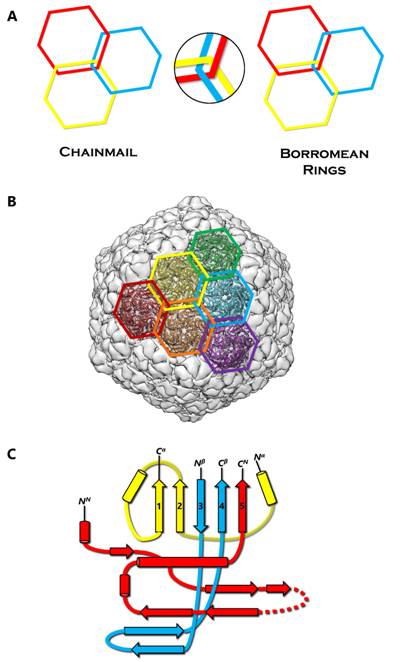
 DownLoad:
DownLoad: 